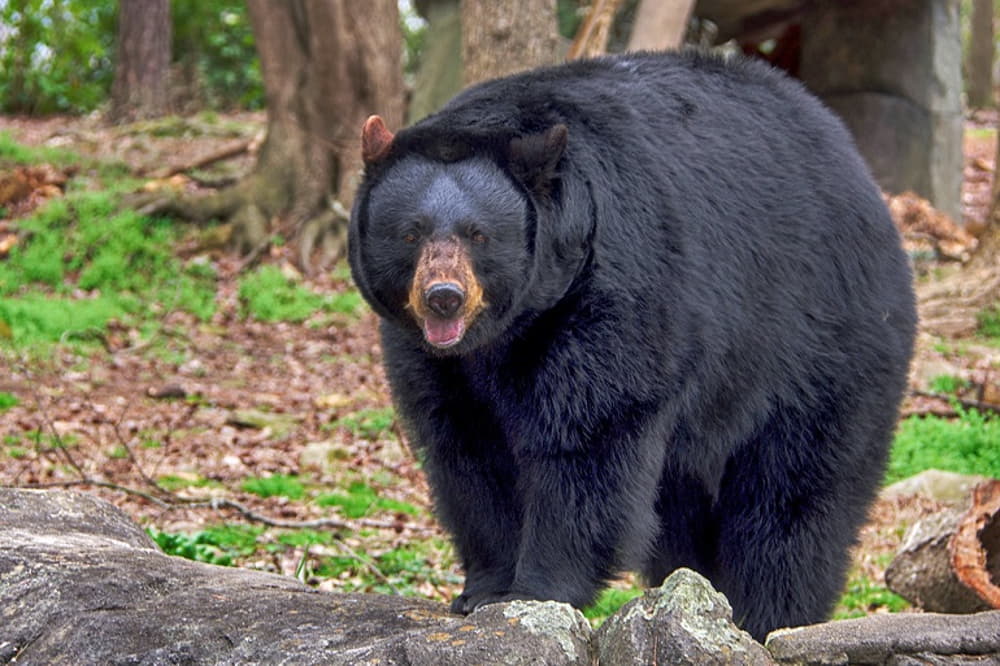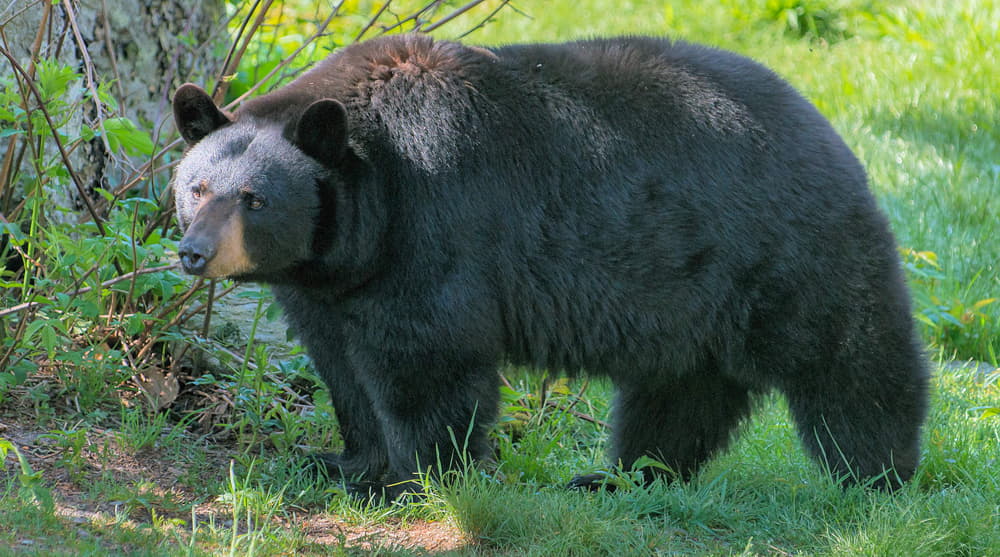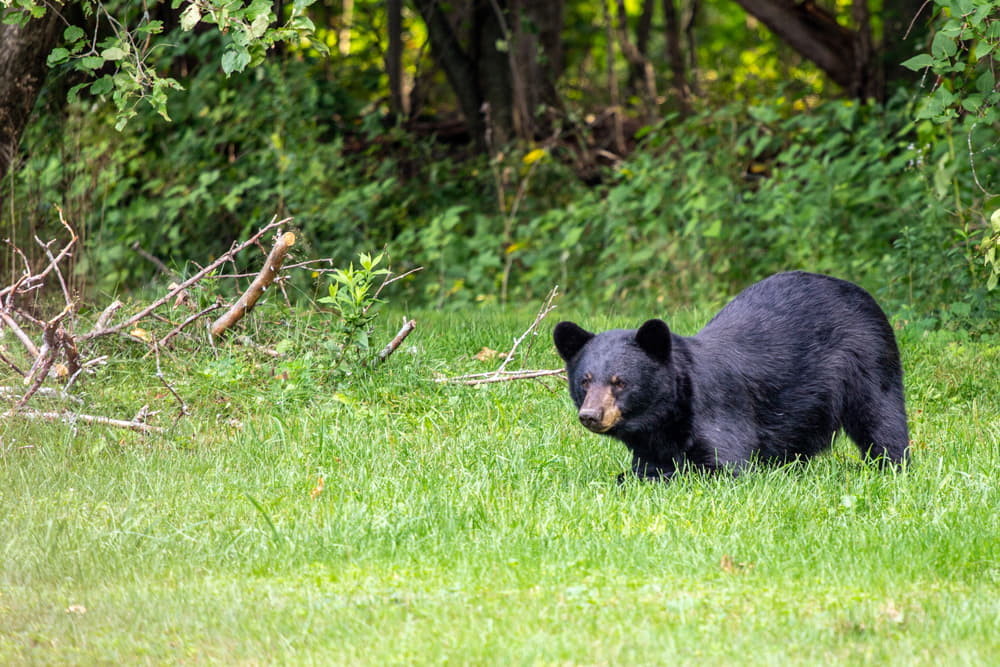Are bears nocturnal or diurnal? Because there are many different species of bears living in different environments. Bears have long held a fascination for humans. There is an opinion that bears are not diurnal or nocturnal. They are crepuscular animals, which means that they are most active at dawn and dusk.
But there are 3 main factors like seasonal changes, weather, and human activities that make them adapt to diurnal or nocturnal habits. These habits are largely determined by the bear’s species and gender. Recent studies suggest that bears may be more flexible in their sleeping behavior than previously thought.
The complexity of bear activity patterns reflects their adaptability to diverse habitats and the availability of food sources. This makes their diurnal or nocturnal habits a fascinating subject of study and a reminder of the natural world’s intricate diversity. Wouldn’t you like to discover which bear species are nocturnal or diurnal? Keep reading to know more!
Table of Contents
About Bears
Bears are mammals with stocky bodies and limbs, non-retractable claws, large snouts, and stubby tails. These mammals eat both animal and plant food. Bears have evolved over thousands of years and have successfully inhabited extensive areas of the Northern hemisphere. Bears are comparatively large mammals. In fact, the bear is known as the world’s largest living carnivore.
There are eight recognized bear species. The following species are listed below, along with their primary habitats:
- North American Black Bear – North America, Alaska
- Brown Bear (including the Grizzly) – North America, Alaska
- Asiatic Black Bear – Eurasia, Russia
- Polar Bear – Arctic Polar Regions, Alaska
- Spectacled Bear – Andes, South America
- Sloth Bear – India and the Asian subcontinent
- Sun Bear – S.E. Asia
- Panda Bear – China
Are Bears Nocturnal Or Diurnal?
The answer varies among species and also depends on their habitat. Sun bears are mostly diurnal, especially males. Black bears are also known to be diurnal unless they live in close proximity to humans. To avoid the local human population, they become more nocturnal in these instances.

However, black bears can be active at any time of day. In the months before hibernation, the black bear needs to gain weight to prepare for its long sleep, making it much more active around the clock. Because black bears eat up to 20 hours a day and have irregular sleeping patterns, it is difficult to classify it as nocturnal or diurnal during this period.
Brown bears and pandas are crepuscular, meaning they’re most active at dawn and dusk. Young brown bears have exhibit diurnal behavior. During the salmon spawning season, the mother brown bear feeds her pups during the day.
Adult male brown bears, on the other hand, are more likely to be active at night. They hunt both during the day and at night. The proximity of hunters and human communities has a significant impact on their sleeping habits.
The sloth bear is the most nocturnal of all bear species. It can be observed scavenging for termites and other grubs at all hours of the night.
Finally, polar bears are neither diurnal or nocturnal. In the arctic, they have to endure months of darkness and months of sunshine, depending on the time of the year. Polar bears would hunger for months if they only hunted for food at night or during the day. They sleep 7-8 hours a day and sleep more often during darker hours.
Factors That Influence Bear Activity Patterns
There are six main factors that influence bear activity patterns include:
- Food Availability
- Habitat And Geography
- Human Activity
- Inter-Species Interactions
- Seasonal Variation
- Weather And Temperature
Food Availability
Bears are opportunistic omnivores, and their activity often revolves around finding food. The presence of abundant food sources can make bears more diurnal, as they can feed during daylight hours, while scarcity may lead to increased nocturnal activity.
Habitat And Geography
Bears that live in open environments, such as tundra or grasslands, are more diurnal. While those living in thickly forested areas may have stronger nocturnal tendencies. The type of habitat a bear inhabits has strongly influenced its activity pattern.
Human Activity
The presence of human activity and disturbances can significantly affect bear behavior. Because of adjacent roads, buildings, and campgrounds, bears become more active at night to avoid human interaction. Additionally, to escape hunters, bears will be more active at night during hunting season (in hunting regions only).
Inter-Species Interactions
In places where both black and brown bears are active, black bears are more active during the day while grizzly bears are more active at night. This is so black bears can avoid being attacked by grizzly bears.

Seasonal Variation
During hibernation, bears are largely inactive. To gain weight, bears often consume more food in the spring (after hibernation) and fall (before hibernation). At these times, bears will be more active around the clock.
Weather And Temperature
Bears may seek shelter and shade during hot days and be more active during milder weather. Climate change is influencing previously documented bear activity patterns. For example, climate change is melting arctic ice flows, making hunting typical prey more challenging for polar bears. Food scarcity drives this bear species to seek alternative food sources.
For How Long Do Bears Sleep?
The length of each bear species’ slumber varies as well. Grizzlies only get about 4 hours of sleep every day when they are actively foraging and scavenging. Polar and black bears, however, take 6 to 7 hour naps. Pandas are able to effortlessly sleep for more than half the day between meals if bamboo is available and abundant.
Aside from their winter sleeping habits, many bears sleep the same amount of hours as humans. The distinction is that bears often sleep in short nighttime and daytime bursts rather than in a single block.
These massive mammals are also at ease sleeping out in the open. They also take refuge in caves, tree cavities, brush piles, behind logs, and amid bamboo plants. Some bears sleep in trees, like Giant Pandas, or dig shallow divots in the snow, like polar bears.
Read this post: What Time Of Day Are Bears Most Active?
Do Bears Have Good Nocturnal And Diurnal Eyesight?
Yes, bears have good nocturnal and diurnal eyesight. Bears are robust, adaptive animals who have demonstrated their capacity to survive and thrive in a variety of light situations, including gloom and darkness. When hunting, these predatory animals rely on binocular vision to give depth of field. A large density of receptor cones in the eye structure promotes good binocular vision.
Three species, including black, brown, and polar bears, possess concentrated cone density in the eyes. As such, these bears are thought to have an element of all-important binocular vision. Bears also have excellent smell and hearing. The bear’s highly developed senses and adequate vision allow it to easily navigate its environment.
Final Thoughts
In conclusion, the question “Are bears nocturnal or diurnal?” does not have a straightforward answer. It depends on various factors and the specific bear species and individuals as we mentioned in the article. Factors such as food availability and season also influence their activity patterns. Understanding bear activity patterns will help hunters strategize more effectively during their hunting trips.

